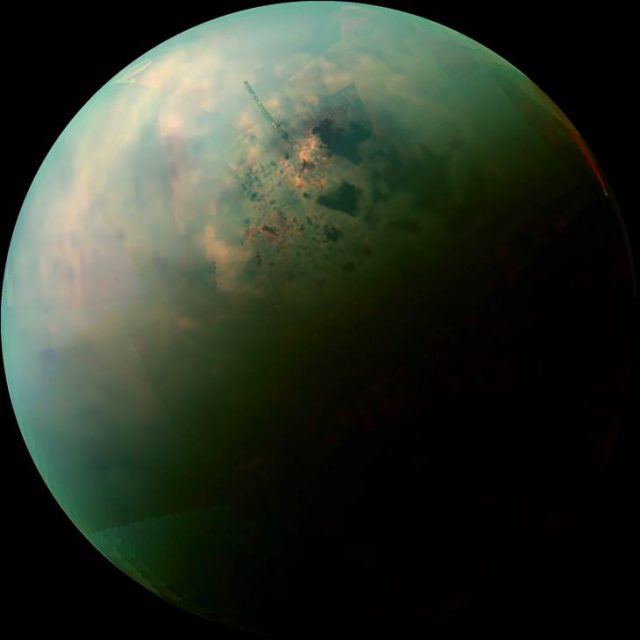MI weekly selection #46

Cassini images add clues to Titan’s weather cycle
New photos from NASA’s Cassini spacecraft are giving researchers clues to the weather cycle of Titan, one of Saturn’s moons. By studying previous images, scientists think Titan has a hydrologic cycle, in which hydrocarbons rain onto the surface filling the lakes and then evaporating back into the atmosphere. The new photos have shown another aspect of that cycle. “Many of these northern liquid bodies are surrounded by a bright material not seen elsewhere on Titan,” said Carolyn Porco, who leads the Cassini imaging team. “Is this an indication that with increased warmth, the seas and lakes are starting to evaporate, leaving behind a deposit of organic material?
First known venomous crustacean identified
The Speleonectes tulumensis, a blind cave-dwelling fanged remipede that resembles a centipede, is the first crustacean found to be venomous, according to scientists at the National History Museum in London. Scientists believe that the remipede’s sophisticated venom system injects its prey first with a paralyzing neurotoxin and then liquefies it for digestion. There are about 70,000 species of crustacean, with the remipede the first to be identified as venomous.
Nanoscale coating repels water
A video released by Brookhaven National Laboratory shows how water is repelled by a nanoscale coating, leaving no moisture behind no matter how powerfully it is shot at the coating. The coating could be used to generate power or waterproof electronics.
Dolphin-sonar-like radar distinguishes true targets from clutter
The twin inverted pulse radar (TWIPR) is able to distinguish true “targets” such as electronic circuits that can be used in explosive or espionage devices, from “clutter” (other metallic items like pipes, drink cans, or nails for example) that may be mistaken for a genuine target by traditional radar and metal detectors.
A natural long-term rate
Central banks ignore this century-old observation at their peril